
The Glass Universe: How the Ladies of the Harvard Observatory Took the Measure of the Stars
by
Dava Sobel
Published 6 Dec 2016
Saunders is hired as the first female computer from outside the observatory family. 1876 Arthur Searle serves as interim director. 1877 Edward Charles Pickering takes office as fourth director, initiates his program of stellar photometry. 1879 Williamina Fleming is hired as a maid in the Pickering household. Edward Pickering introduces the meridian photometer for judging the brightness of stars. 1880 Edward Pickering publishes his five-type classification of variable stars. 1881 Williamina Fleming becomes a permanent member of the observatory staff. 1882 Edward Pickering and his brother William, of MIT, experiment with lenses for photographing the night sky.
…
“The Solar Union.” Journal of the Royal Astronomical Society of Canada 7 (1913): 420–37. Plotkin, Harold. “Edward Charles Pickering.” Journal for the History of Astronomy 21 (1990): 47–58. _____. “Edward Charles Pickering’s Diary of a Trip to Pasadena to Attend Meeting of Solar Union, August 1910.” Southern California Quarterly 60 (1978): 29–44. _____. “Edward C. Pickering and the Endowment of Scientific Research in America, 1877–1918.” Isis 69 (1978): 44–57. _____. “Edward C. Pickering, the Henry Draper Memorial, and the Beginnings of Astrophysics in America.” Annals of Science 35 (1978): 365–77. _____.
…
Bruce telescope arrives at Arequipa. 1897 Antonia Maury publishes “The Spectra of Bright Stars” in the Annals, vol. 28, and is acknowledged as the author on the title page. 1898 National professional organization of astronomers, later named the Astronomical and Astrophysical Society of America, established at a meeting held at Harvard. Edward Pickering introduces Harvard College Observatory Bulletins to augment the telegraphic announcements with details sent by mail. 1899 Williamina Fleming given Harvard title as curator of astronomical photographs. William Pickering discovers a ninth satellite of Saturn, Phoebe. 1900 Harvard “Chest of 1900” time-capsule project invites Edward Pickering and Williamina Fleming to chronicle their daily activities. Catherine Wolfe Bruce dies. 1901 Edward Pickering receives his second gold medal from the Royal Astronomical Society, for variable star studies and advances in astrophotography.
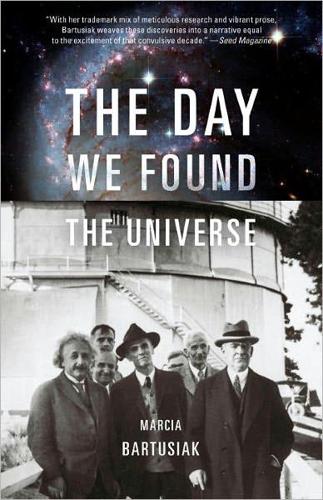
Day We Found the Universe
by
Marcia Bartusiak
Published 6 Apr 2009
He was expecting to return to use a new spectrograph, just completed for the Crossley, and begin examining spiral nebulae. But within weeks Keeler died in San Francisco, after experiencing two strokes. The setback for astronomy, said his friend and colleague Campbell, was “incalculable.” Harvard College Observatory director Edward Pickering wrote that the “loss cannot be overestimated… There was no one who seemed to me to have a more brilliant future … or on whom we could better depend for important advances in work of the highest good.” The journal Science ran a tribute to Keeler on the first page of its September 7, 1900, issue.
…
The Harvard College Observatory did just that in the 1890s, when it established a southern station in the highlands of Peru, just above the town of Arequipa. Before this, for more than a decade, Harvard had been carrying out a formidable task: to catalog every star in the northern sky and accurately gauge its color and brightness. Presented with a sizable endowment for a program in spectroscopy, observatory director Edward C. Pickering resolved to photograph and classify the spectra of all the bright stars as well. The Peruvian observatory allowed Harvard to extend the reach and sweep of this endeavor to the southern sky. By doing this, Pickering was helping astronomy move beyond just tracking the motions of stars across the sky to figuring out their basic properties.
…
Here was a ready workforce, he noted in one annual observatory report, entirely “capable of doing as much and as good routine work as astronomers who would receive much larger salaries. Three or four times as many assistants can thus be employed, and the work done correspondingly increased for a given expenditure.” Williamina Fleming (standing) directs her “computers” while Harvard Observatory director Edward Pickering looks on (Harvard College Observatory) These women “computers,” as they were called, many with college degrees in science, were situated in two cozy workrooms, pleasantly decorated with flowered wallpaper and star charts. Working at ma hogany writing tables, crammed together, each woman through the day might peer through a magnifying glass at her selected plate or industriously record her findings in a notebook.
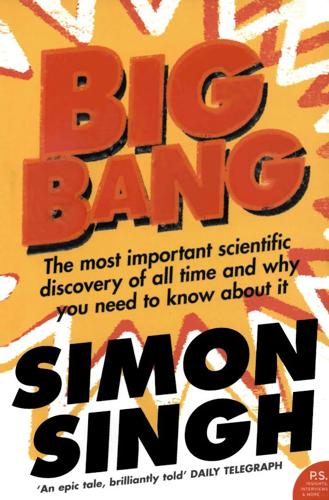
Big Bang
by
Simon Singh
Published 1 Jan 2004
At the centre of the photographic revolution in astronomy was the Harvard College Observatory, partly thanks to its first director, William Cranch Bond, who had taken the first daguerreotype of a star at night, Vega, back in 1850. Also, the amateur astronomer Henry Draper, whose father John Draper had taken the first photograph of the Moon, bequeathed his personal fortune to Harvard in order to photograph and catalogue all the observable stars. This allowed Edward Pickering, who became director of the observatory in 1877, to initiate a relentless programme of celestial photography. The observatory would take half a million photographic plates in the decades to come, so one of Pickering’s biggest challenges was to establish an industrial-scale system for analysing the photographs.
…
This was partly because the telescopes were housed in cold, dark observatories, which were considered unsuitable for the fairer sex, and partly because Victorian sensitivities would have been offended by the thought of a man and a woman working together late into the night, staring up at the romantic array of stars. But at least the women could now examine the photographic results of night-time observations and contribute to astronomy, a discipline that had largely excluded them in the past. Figure 43 The Harvard ‘computers’ at work, busy examining photographic plates while Edward Pickering and Williamina Fleming watch over them. On the back wall are two plots that show the oscillating brightness of stars. Although Williamina Fleming’s team of women computers were supposed to focus on the drudgery of harvesting data from the photographs so that the male astronomers could conduct the research, it was not long before they were reaching their own scientific conclusions.
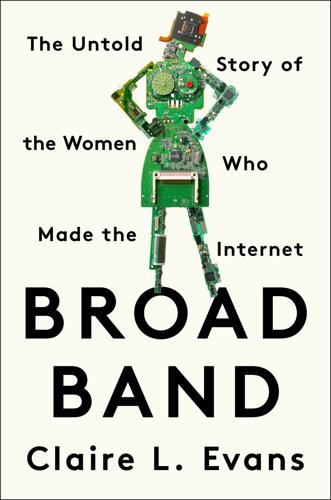
Broad Band: The Untold Story of the Women Who Made the Internet
by
Claire L. Evans
Published 6 Mar 2018
Labor would remain its own reward for a long time. By the end of Ada’s century, although technically gifted women like her could find employment as computers on either side of the Atlantic, their formal titles weren’t accompanied by commensurate status or compensation. In the 1880s, for example, the astronomer Edward Charles Pickering hired only women to analyze and classify stellar data for his Harvard lab, including his own maid, Williamina Fleming. Although he would later champion the women working in the observatory, even presenting papers on Fleming’s behalf at astronomical conferences, Pickering didn’t hire them out of advocacy.
…
One biographer has suggested: Benjamin Wooley, The Bride of Science: Romance, Reason, and Byron’s Daughter (New York: McGraw-Hill, 1999), 340–41. “I do dread that horrible struggle”: Toole, Ada, the Enchantress, 290. “her ideas are so modern”: B. V. Bowden, preface to Faster Than Thought, xi. the astronomer Edward Charles Pickering: The going legend here, although there is some evidence to the contrary, is that Pickering hired Fleming after growing frustrated with a group of male assistants hired to inspect photographic plates of stellar spectra. Storming out of his office, he vowed that even his Scottish maid could do a better job.

The Interstellar Age: Inside the Forty-Year Voyager Mission
by
Jim Bell
Published 24 Feb 2015
Or the academics working together on early forms of calculus to propose some of the first models for a sun-centered universe in the sixteenth-century Kerala school of mathematics in India (influencing, in their writings, another loner astronomer in Poland, the previously mentioned Nicolaus Copernicus). Or Harvard astronomer Edward Pickering’s early-twentieth-century group of mostly female “computers” toiling through enormous telescopic data sets to work out the modern basis for the classification of stars. As technology has advanced, and the breadth of knowledge required to understand, utilize, and improve that technology has expanded, it has become more difficult for individuals, or even small groups of people, to define the cutting edge of science, and especially space science.

The Milky Way: An Autobiography of Our Galaxy
by
Moiya McTier
Published 14 Aug 2022
Wilcots, “Magellanic Type Galaxies Throughout the Universe,” in “The Magellanic System: Stars, Gas, and Galaxies,” ed. Jacco Th. van Loon and Joana M. Oliveira, Proceedings of the International Astronomical Union 4, no. S256 (July 2008): 461–72, https://doi.org/10.1017/s1743921308028871. 6Henrietta Swan Leavitt was just one of at least eighty women employed by Edward Pickering between 1877 and 1919. These brilliant women analyzed vast amounts of stellar data but were still disrespected by many contemporaries who called them “Pickering’s Harem.” 7These isolated void galaxies are rare, but they form in an interesting way. Their fate, though, is pretty similar to a typical galaxy’s.

First Light: Switching on Stars at the Dawn of Time
by
Emma Chapman
Published 23 Feb 2021
The 1890s saw the industrialisation of stellar classification, not with the use of computers as we know them, but with the use of women, who were referred to as ‘computers’. The cheap labour women provided allowed Williamina P. Fleming to get a job as an assistant to the Harvard astrophysicist Edward C. Pickering. Fleming evaluated stellar spectra and assigned them a letter according to the strength of the hydrogen absorption lines. They began by giving the stars with the most hydrogen the letter A, those with slightly less hydrogen B and so on down the alphabet, up to Q. This was rather cumbersome, and a later assistant of Pickering, Annie Jump Cannon, reorganised the system in 1901 in order of temperature, merging similar classes.5 She was quite the computer, classifying hundreds of stars per hour until eventually the alphabetical classes were reorganised into 10 classes: OBAFGKMRNS, which astronomers traditionally remember as Oh Be A Fine Girl Kiss Me Right Now Sweetheart.1 Each of these classes is subdivided into finer numerical divisions of temperature, so that our Sun is a G2 star.
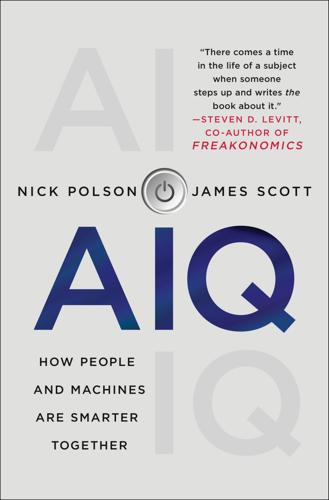
AIQ: How People and Machines Are Smarter Together
by
Nick Polson
and
James Scott
Published 14 May 2018
It was only in her senior year that she even took an astronomy course. Luckily for science, she loved it so much that she ended up staying on after completing her degree, to take graduate-level courses and to volunteer at the Harvard College Observatory. Her outstanding abilities soon drew the notice of the observatory’s director, Edward C. Pickering, who asked Leavitt to join the “Harvard Computers,” a team of math prodigies—all women—hired to analyze data from telescopes. Long before a “computer” was a device, it meant a person who did calculations.5 Leavitt’s main role was to estimate and catalog the brightness of stars for Harvard’s massive ongoing “sky survey,” which required her to compare the sizes of tiny spots of light across thousands of archival images from the world’s great telescopes.
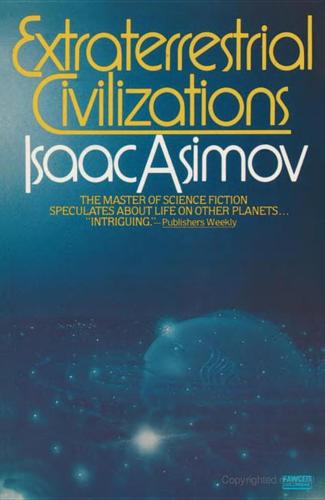
Extraterrestrial Civilizations
by
Isaac Asimov
Published 2 Jan 1979
The revolution of two stars is more rapid than the rotation of one star, so that in the latter case the broadening is carried on to the point of actual spreading apart into two lines. The first such “spectroscopic binary” to be discovered was Mizar, and it was in 1889 that the American astronomer Edward Charles Pickering (1846–1919) detected the doubling of its spectral lines. Actually, the component stars of Mizar are separated by 164 million kilometers (102 million miles), which is a larger separation than that of the stars of the Capella system. The Mizar pair fail to be seen as a pair in the telescope because the system is so far away.